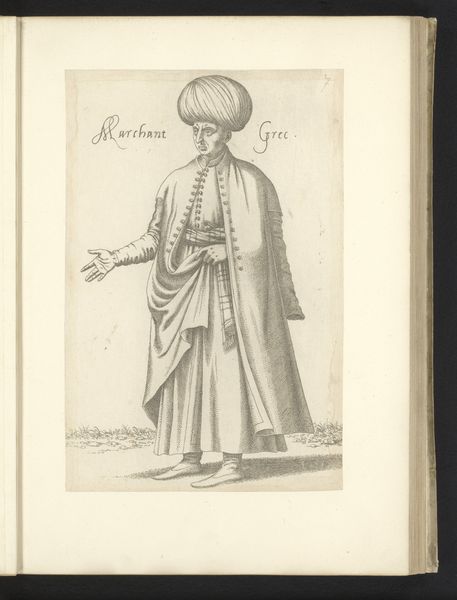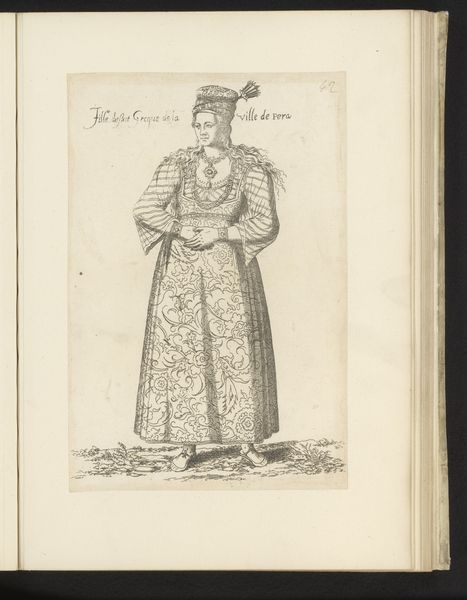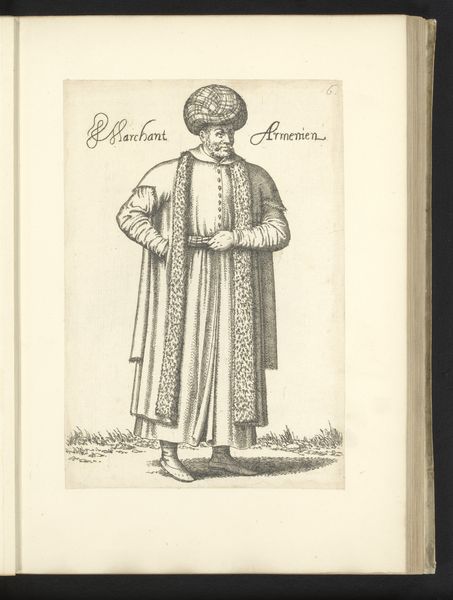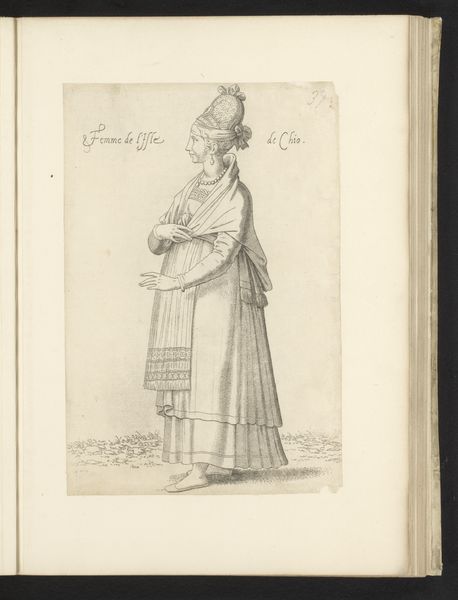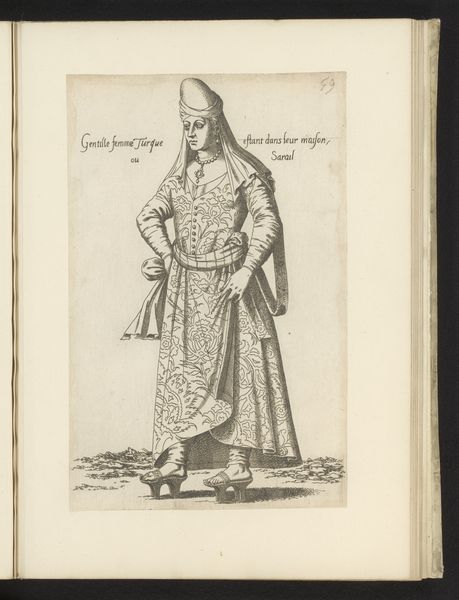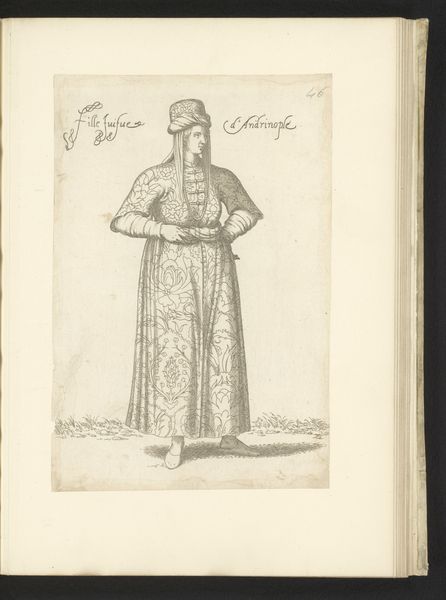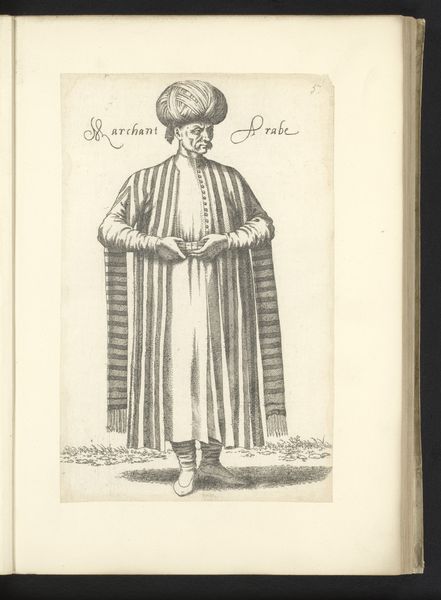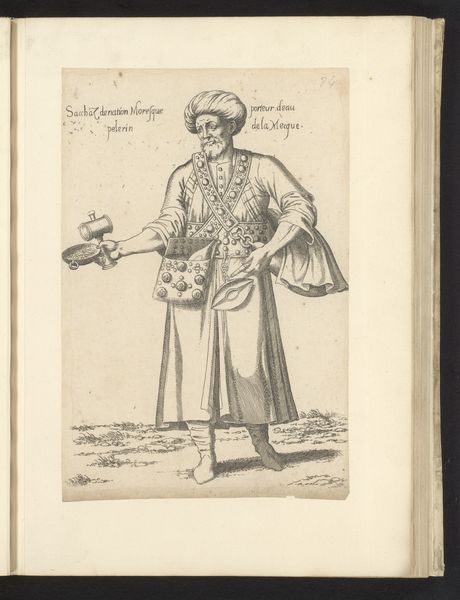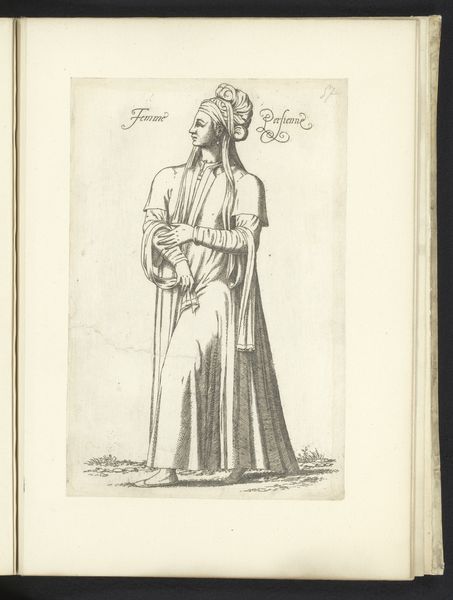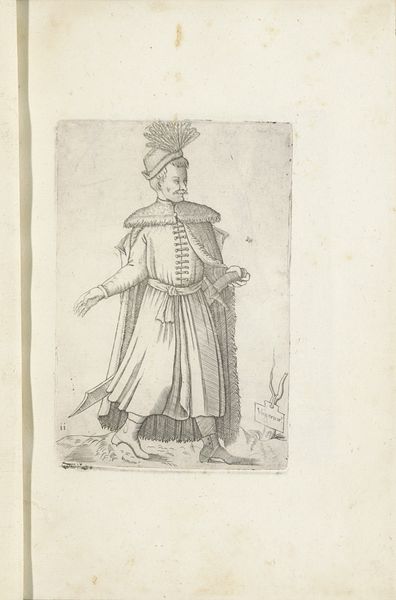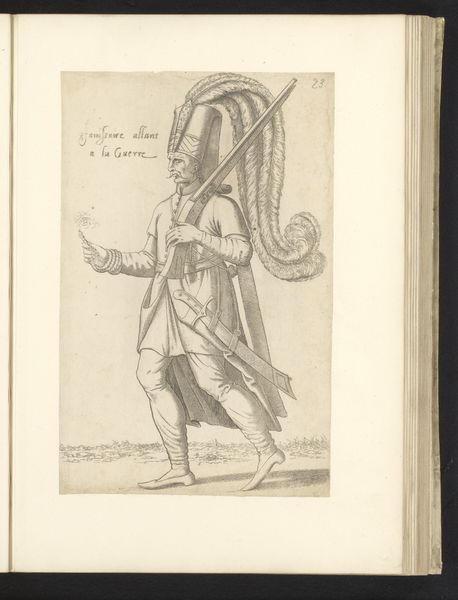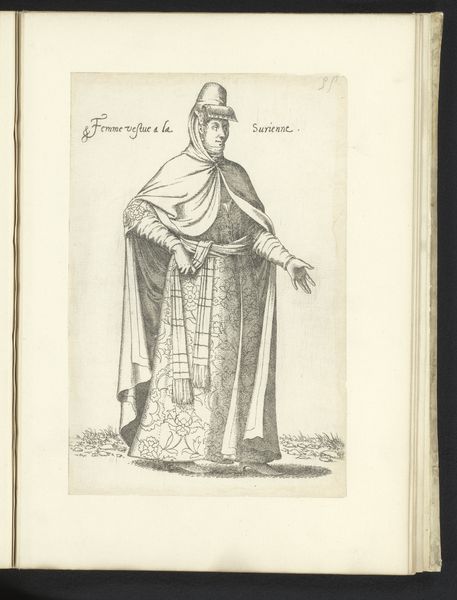
print, engraving
#
portrait
# print
#
mannerism
#
pen-ink sketch
#
islamic-art
#
history-painting
#
engraving
Dimensions: height 264 mm, width 172 mm
Copyright: Rijks Museum: Open Domain
Curator: Here we have Léon Davent's engraving, "Emir," created between 1555 and 1568. It's quite striking, isn't it? Editor: My initial reaction is one of impressive stillness. The composition centers a solitary figure, almost suspended in the blank space. Curator: Davent made this engraving during a period of intense cultural exchange. These images, disseminated widely, helped shape European perceptions of the Ottoman world. We need to be cautious about viewing this image outside of its specific context in shaping and reflecting European attitudes and fantasies toward the Ottoman Empire. Editor: I see your point about the complexities of cultural representation, but consider for a moment the exquisite detail achieved solely through line. The rendering of fabrics is wonderful, how the drapery creates soft highlights and shaded volume on what is essentially a two-dimensional surface. Curator: And let’s remember who the intended audience likely was— European nobility and the educated elite. This image provided them with a certain level of knowledge, of "insider" access, feeding into the era's obsession with classifying the world and solidifying their own positions. The 'Emir' becomes almost a specimen, doesn’t he? Editor: He certainly stands more like a sculpture, the precision and almost mathematical rendering gives him solidity that balances the fine lines and patterns. The turban especially sits like an independent structure. Curator: Exactly. It's this carefully constructed visual language that reinforced the existing power dynamics. Remember, knowledge and representation were key instruments in constructing cultural and political dominance. The print becomes another way to solidify identity. Editor: The balance between meticulous execution and subtle emotive rendering has an impact for both historic record, and aesthetic analysis. Thank you for sharing insights on "Emir" and it’s European historical contexts! Curator: Absolutely. It’s crucial to always be aware of the inherent biases and complexities embedded within such historical representations.
Comments
No comments
Be the first to comment and join the conversation on the ultimate creative platform.
